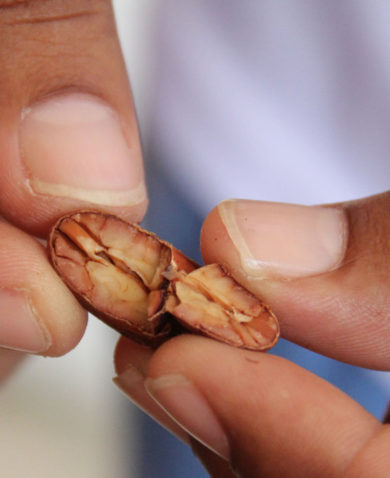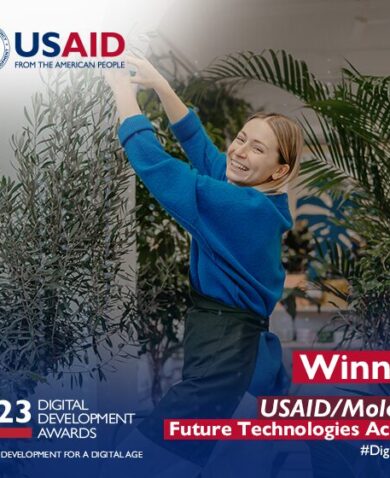
Bridging Gaps in Financial Services with Digital Technology
September 16, 2016 | 2 Minute ReadIn Uganda, an integrated digital platform uses mobile technology to collect biographical information on smallholder farmers and connect them to a range of digital financial services, including crop insurance and production loans.
This post originally appeared on SEEP’s blog. Chemonics is a proud member of SEEP.
Have you ever wondered if there is a better way to expand and deepen financial inclusion? Have you tried forming innovative partnerships or using digital technology?
Financial inclusion is a building block of strong economies throughout the world. However, in many developing countries, we consistently see constraints to financial inclusion. For example, financial service providers do not provide services in sparsely populated, hard to reach, rural areas. At the same time, poor and underserved populations do not have reliable financial records, credit histories, or collateral to support their financial needs.
Technology-based solutions can be employed to reduce these constraints, and help bridge the gap between providers and end users. Also, partnerships with local innovators and counterparts can help ensure that solutions are efficient, appropriate, and sustainable.
Working and Learning Together at #SEEP2016
At the 2016 SEEP Annual Conference, we will be exploring technology and partnership solutions at the Peer Learning Session: “New” digital technologies and “old” partnership approaches for financial inclusion. Join Sarah Martin, Director at MasterCard Advisors in Public Sector, International Development; Zilla Mary Arach, Co-founder and Chief Operations Officer at Akorion Company LTD in Uganda; Timothy Nourse (@timnourse), President at Making Cents International; and Eileen Hoffman (@Eileen4EGT), Director of the Economic Growth and Trade Practice at Chemonics, for a rich and engaging discussion that will explore how:
- Different financial services can be streamlined through digital platforms to reach smallholder farmers in rural Uganda.
- Digitizing value chain transaction history has opened up opportunities for rural retailers in Tunisia.
- Development actors can work with local private sector partners to ensure sustainable increased access to finance.
- Digital identification cards can promote inclusive financial services in times of conflict and crisis.
Three Digital Platforms: Countless Possibilities
Our session will showcase how three different digital platforms and partnership models have deepened inclusion. In Uganda, a digital application for building farmer profiles is facilitating access to crop insurance and credit. A tri-partite financing agreement between rural retailers, a MFI, and a wholesaler in Tunisia is underpinned by digitized sales records and payments. Also, digital IDs are bringing millions into the formal economy in Egypt and Nigeria.
Join us to learn how in Uganda, Akorion developed an app and trained village agents to build profiles of underserved smallholder farmers. Providing information such as biodata, production data, and garden maps, these profiles successfully link Ugandan farmers with loans and crop insurance.
Making Cents, through their local partner Pro-Invest, has leveraged Pro-Invest’s successful Najjahni mobile services platform to help rural retailers digitize their orders and payments. Through these mobile services, retailers build a credit history and access value chain financing opportunities through a local microfinance institution engaged via a tripartite agreement.
Our panel will also explore MasterCard’s digital identification programs. In Egypt, Nigeria, and many other markets, underserved citizens are gaining first-time access to financial services at national scale through an integrated “wallet” for payments, savings, social benefits, and more.
Deepening financial inclusion requires a mix of old and new — combining the power of digital platforms with what we’ve learned about client characteristics and partnerships to reach scale, lower costs, and solve traditional problems. Register now and join us on September 20 at the SEEP Network Annual Conference to learn from your peers and participate in this important discussion.




















